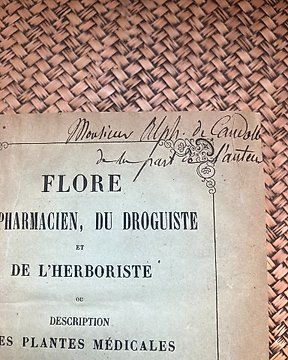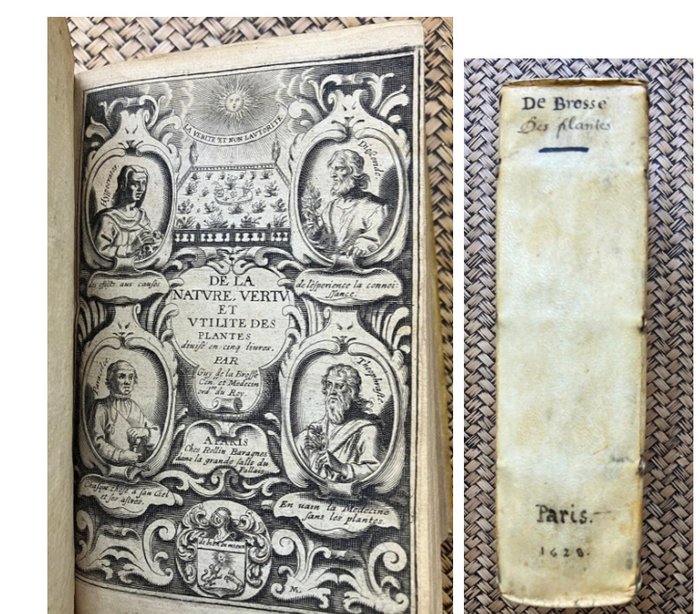
Nicolas-Charles Seringe - Flore du pharmacien, du droguiste et de l'herboriste: ou description des plantes médicales - 1852
N.º 82872163

N.º 82872163

A lovely copy of a book normally found in bad condition (browned) and in a wonrn binding. This one is in exceptional condition and complete with lovely frontispiece, folding plate and in a lovely vellum binding.
Smallish octavo: (32) pages including title-frontispiece, P1 : 1-160 pages / P2 : (8), [161]-288 pages / P3 : (8),[289]-440 pages and 3 folding table / P4 : [445]-540 pages / P5 : [541]-680 pages / [Dessein d'un jardin] : [681 (title page)]-849-(29) pages.
Very rare first edition, complete with three folding tables and the frontispiece. The treatise on nature is divided into five books. Guy de La Brosse attempts to make a systematic examination of plants, from their place in nature and the source of their medicinal virtues, to a discussion of how to classify them and how their virtues can be known. It is followed, with a separate title in continuous pagination, by: “Design of a royal garden for the cultivation of medicinal plants in Paris, where the reason for the necessity is amply deduced, & what good it can bring to the public. » There we find pleas in favor of the creation of the plant garden addressed to different institutions. It is in fact to Guy de la Brosse, ordinary physician to King Louis XIII, and his perseverance, that we owe the fact that the Jardin des Plantes, was created and inaugurated in 1640.
Complete. With engraved title page and three large folding tables. Contemporary ink annotations. In contemporary vellum. Ex-libris: Docteur Maurice Villaret, with familiar bookplate.
FIRST EDITION.
Three copies listed on Worldcat in US: NLM, Morton Aboretum, University of Minnesota.
This is his major published work, and the fruit of many years of botanical-medical research. It is rich in alchemical and medical references.
Scholarly Studies
This work’s importance is the subject of a good study by Agnes Arber, ‘The Botanical Philosophy of Guy de la Brosse: A Study in Seventeenth-Century Thought’, Isis 1/3 (1913): 359–369; see also Rio Howard, ‘Guy de La Brosse: botanique et chimie au début de la révolution scientifique’, Revue d’histoire des sciences 31 (1978): 301-326. Didier Kahn has explored the alchemical and symbolic aspects of this book in ‘Plantes et médecine, (al)chimie et libertinisme chez Guy de la Brosse’ (https://www.biusante.parisdescartes.fr/histoire/medica/presentations/brosse.php), while Jeanne Pronteau has explored the development of medicinal gardens by Guy de la Brosse and others in ‘Étude sur le Jardin royal des plantes médicinales à Paris (1626-1788)’, Annuaire de l’École Pratique des Hautes Études, IVe section (sciences historiques et philologiques 107 (1974-1975): 651-669.
Cómo comprar en Catawiki
1. Descubre algo especial
2. Haz la puja más alta
3. Paga de manera segura